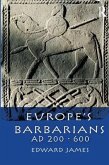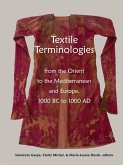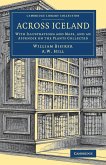This is a scholarly study of the collision of Goths and Romans in the fourth and fifth centuries. Gothic tribes played a major role in the destruction of the western half of the Roman Empire between 350 and 500, establishing successor kingdoms in southern France and Spain (the Visigoths), and in Italy (the Ostrogoths). Our historical understanding of this 'Migration Period' has been based upon the Gothic historian Jordanes, whose mid-sixth-century Getica suggests that the Visigoths and Ostrogoths entered the Empire already established as coherent groups and simply conquered new territories. Using the available contemporary sources, Peter Heather is able to show that, on the contrary, the Visigoths and Ostrogoths were new and unprecedentedly large social groupings at this time, and that many Gothic societies failed even to survive the upheavals of the Migration Period. Dr Heather's scholarly study explores the development of Visigothic and Ostrogothic societies, their rise to power, and the complicated interactions with the Romans which helped bring about the fall of the Roman Empire.
This book examines the collision of Goths and Romans in the fourth and fifth centuries. In these years Gothic tribes played a major role in the destruction of the western half of the Roman Empire, moving the length of Europe from what is now the USSR to establish successor states to the Roman Empire in southern France and Spain (the Visigoths) and in Italy (the Ostrogoths). Our understanding of the Goths in this "Migration Period" has been based upon the Gothic historian Jordanes, whose mid-sixth-century Getica suggests that the Visigoths and Ostrogoths entered the Empire already established as coherent groups and simply conquered new territories. Using more contemporary sources, Peter Heather is able to show that, on the contrary, Visigoths and Ostrogoths were new and unprecedentedly large social groupings, and that many Gothic societies failed even to survive the upheavals of the Migration Period. Dr Heather's scholarly study explores the complicated interactions with Roman power which both prompted the creation of the Visigoths and Ostrogoths around newly emergent dynasties and helped bring about the fall of the Roman Empire.
This book examines the collision of Goths and Romans in the fourth and fifth centuries. In these years Gothic tribes played a major role in the destruction of the western half of the Roman Empire, moving the length of Europe from what is now the USSR to establish successor states to the Roman Empire in southern France and Spain (the Visigoths) and in Italy (the Ostrogoths). Our understanding of the Goths in this "Migration Period" has been based upon the Gothic historian Jordanes, whose mid-sixth-century Getica suggests that the Visigoths and Ostrogoths entered the Empire already established as coherent groups and simply conquered new territories. Using more contemporary sources, Peter Heather is able to show that, on the contrary, Visigoths and Ostrogoths were new and unprecedentedly large social groupings, and that many Gothic societies failed even to survive the upheavals of the Migration Period. Dr Heather's scholarly study explores the complicated interactions with Roman power which both prompted the creation of the Visigoths and Ostrogoths around newly emergent dynasties and helped bring about the fall of the Roman Empire.








